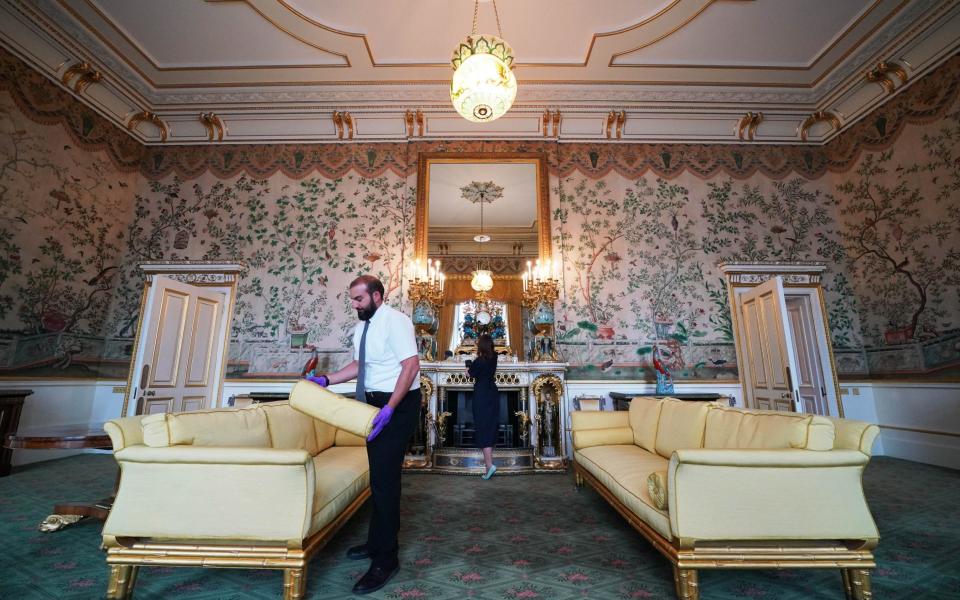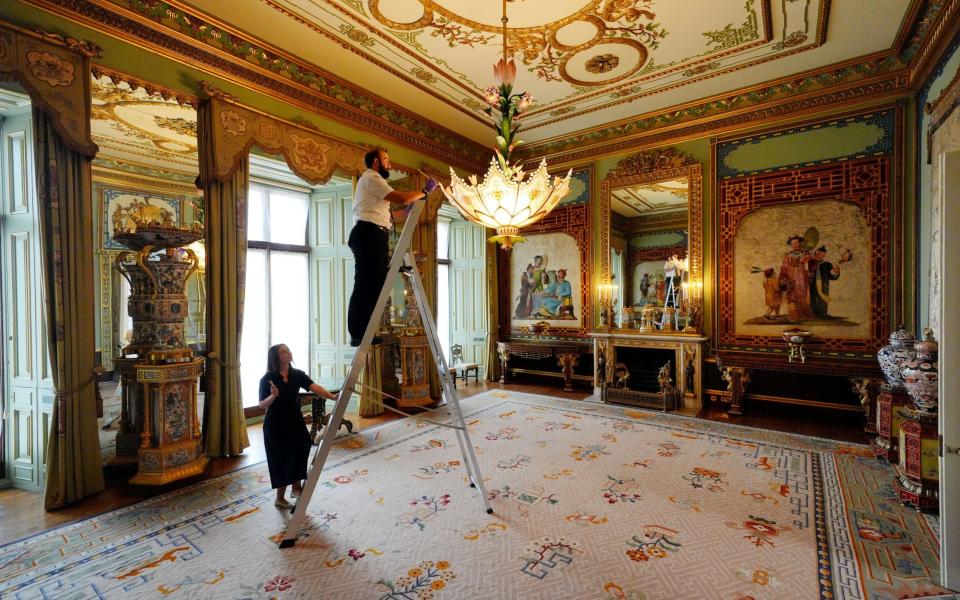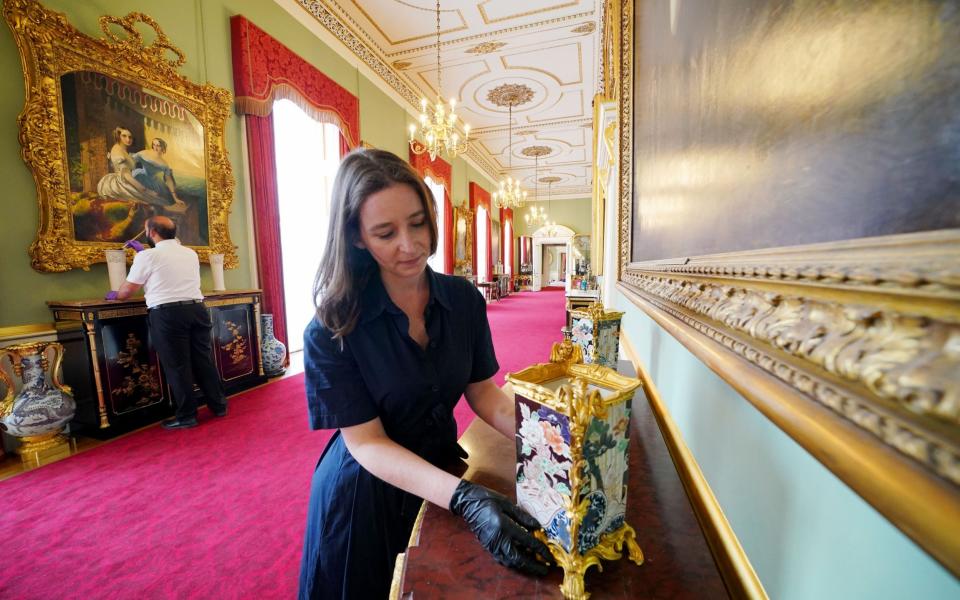When the public are invited in to witness the view from the Buckingham Palace balcony for the first time next week, they will be walking in the footsteps of the Royal family.
Perhaps unexpectedly, those steps will lead them down hundreds of gold dragons from floor to ceiling, a Buddha statue that blows incense through its mouth and all the way up to the most famous net curtains in the world.
Inside the Center Room in the palace, which was opened at the request of the King, the first cohort of visitors will be allowed to look out at the place where crowds gather for jubilees, royal weddings and birthdays.
There is only one thing missing from a true royal tour: the television in the corner, the King and his family watching major national events so they can see the whole scene down The Mall.
The television has been hidden away for the tour, but visitors will be able to see for themselves why it is needed: the Queen Victoria Memorial directly in front of the balcony offers a view of the crowds ahead.
Instead, tourists will see – for the first time – what kings and queens have seen for generations, from the distinctive interior decorations of the East Wing to the Changing of the Guard below.
No ropes, cordage or glass protect the centuries-old artefacts, most of which were collected and commissioned by George IV for the Brighton Pavilion before being moved en masse to Buckingham Palace in 1850 after the new wing was built .
Around 6,000 visitors will walk through the East Wing this summer, in a trial opening of the palace’s private rooms which have been preserved and restored as part of a wider £369 million, 10-year project.
The King was the driving force behind the opening, and has been given his own tour to name what visitors will see.

It starts in the Yellow Drawing Room, previously used as a meeting room for palace staff and where Elizabeth II recorded her Christmas address to the nation in 2004, moving through the 240ft long “Main Corridor” to the Center Room.
Visitors will not be allowed to stand on the balcony, which is lower than it appears from a distance and has wire cables and lighting on its floor.
Those who look closely while walking will see many hidden details that have never been seen before, even in rarely released photos of the rooms.
At knee height, table legs are carved to look like Chinese men.
Beneath a large portrait by Thomas Gainsborough sits a figure of Buddha, depicted as an incense burner blowing smoke from his mouth.
If ticket holders look down, they can see a sculptural figure of a man under one of the tables.
The style is called “Chinoiserie”, commissioned to imitate Chinese and Japanese art and design at a time when it was little known in the West.


George IV acquired most of the goods for Brighton Pavillion, which Queen Victoria sold in 1850 to finance the construction of the East Wing 1847-9 to accommodate her growing family.
The magnificent decoration was transported to London via 143 shipments on artillery carts, where it transformed the bare walls and corridors of the new wing into a colorful house where images of birds, flowers, butterflies and fish mingle with large traditional royal portraits and chandeliers.
Just as Victoria and Albert’s children could count the hundreds of gold dragons perched on ceilings, fireplaces, vases and curtain poles, so the new generation of Prince George, Princess Charlotte and Prince Louis can do the same 175 a year later.
Some of the rooms will become familiar to the public through photographs: this week, the West Indies cricket team was held in one of the reception rooms, and the late Queen posted portraits in the Yellow Drawing Room for her exceptional natural light.
Large decorative pagodas can be found in the corners, with thick curtain poles carved to look like palm trees above and floral patterned carpets below.
Where there were once candles, there are now electric versions that have been rewired in a project where every floorboard has been taken and 3,500 works of art removed for conservation.


Only a handful of changes have been made over the years, with Queen Mary adding wallpaper and removing silk hangings from the warehouse, but the “vast majority” has not changed since Prince Albert oversaw the original plans.
Yellow sofas have now been moved back into the sitting room to allow members of the Royal family to use it comfortably for receptions and audiences.
Among the conservation work carried out is the glass chandelier, shaped like a lotus flower, in the Central Room, together with the 18th century hand-painted Chinese wallpaper in the Yellow Drawing Room which has been removed and cleaned.
After analyzing historical paint pigments, the walls of the Main Corridor were returned to their original green color scheme.
Tickets for this year’s tours have sold out within hours, although it is thought that if successful the East Wing could be made a permanent part of the Buckingham Palace tour along with a Summer opening which gives entry to 19 state rooms each year.
This year, the tours will end in the palace’s ballroom, where a recent portrait of the King by Jonathan Yeo is on temporary display.

